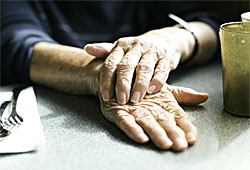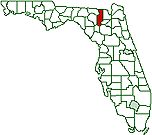
1 in 7 seniors in US face hunger threat. See large photo
and
read about it here.
USDA Reports More Hungry Households in Florida
Posted September 6, 2012 11:15 am | Public News Service
TALLAHASSEE, FL - Not enough money to keep food on the table. That's the challenge for more than 15 percent of Florida households, according to new data from the agency responsible for federal food and nutrition programs. The U.S. Department of Agriculture (USDA) says the number of Florida households considered "food insecure" has been creeping up since 2006, from just over 12 percent (the average from 2006 to 2008) to 15.4 percent (the average from 2009 to 2011).

Read about the
Childhood Hunger Coalition here.
Debra Susie, executive director of the nonprofit hunger prevention policy group Florida Impact, says seniors on fixed incomes are not the only group affected.
"We've been hit hardest with regard to the housing bubble that burst - and of course, in our state that affects construction. And when the rest of the country is suffering and not able to travel to places like Disney, our service sector suffers, as well."
Florida ranks 14th for its percentage of hungry
households. Southern states make up most of the top 10.
Meanwhile, Congress is considering cutting billions of
dollars from the Supplemental Nutrition Assistance
Program (SNAP), formerly known as food stamps.
However, a new poll shows most Americans don't think
that's a good idea. Jim Weill, president of the Food
Research and Action Center (FRAC), says it might be
because almost everyone knows someone who has needed the
help.
Links:
•
The USDA report
•
Food Research and Action Center
"American families know what the food stamp program is
and what it does. And sometimes, the people who are
attacking it, using false images of it, don't realize
how many of their constituents are on the program."
Weill says only 10 percent of those polled strongly
favored cutting the SNAP program, while 79 percent
wanted the funding either kept the same or even
increased to address the problem of hunger. The poll was
taken in late August.
Photo of hands: Credit: iStockphoto; Links and graphics added by the Observer
